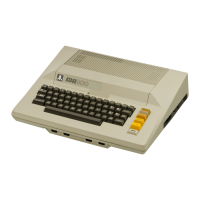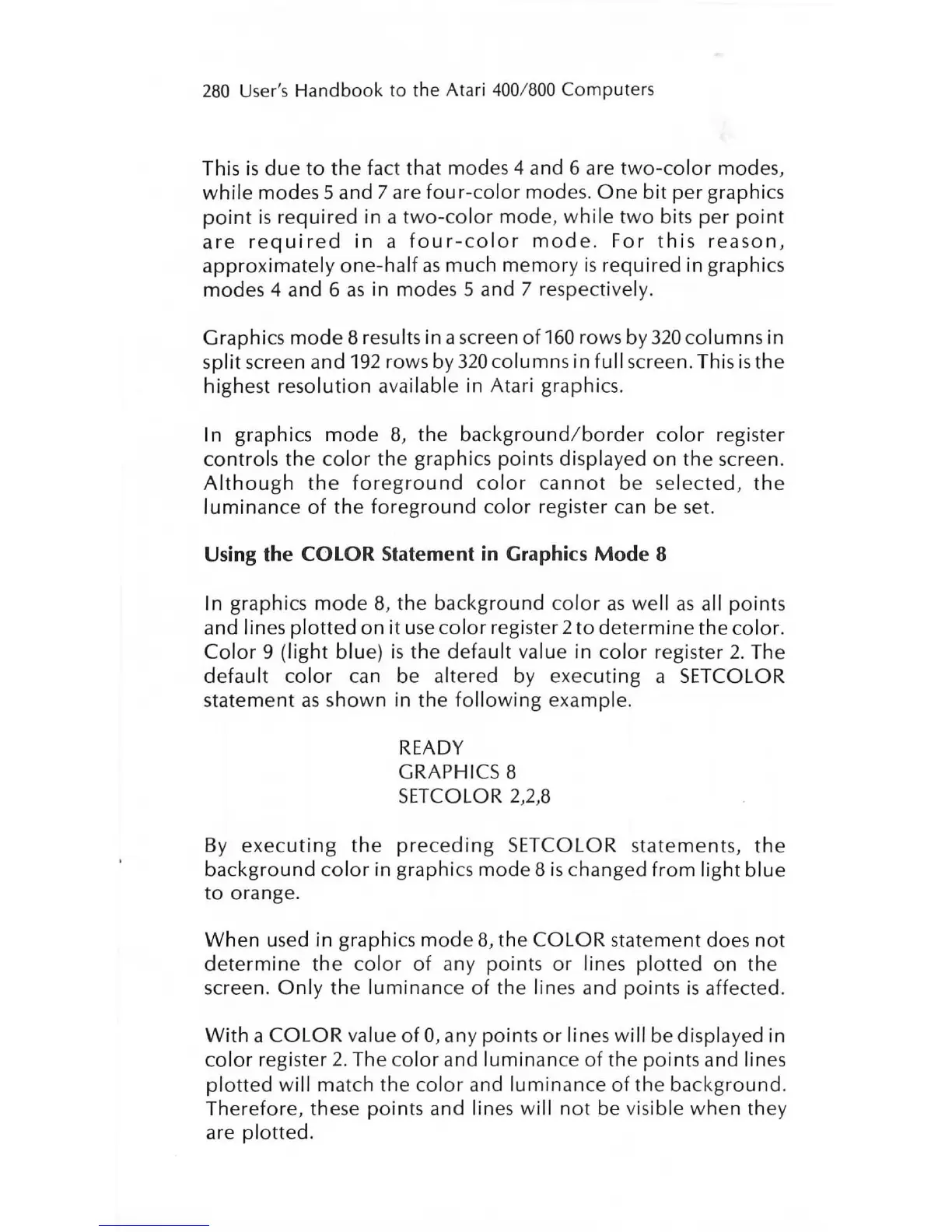280
User's
Handbook to the Atari 400/ 800 Computers
This
is
due
to
the
fact that modes 4 and 6 are
two-color
modes,
while
modes 5 and 7 are
four-color
modes.
One
bit
per graphics
point
is
required
in a
two-color
mode
,
while
two
bits
per
point
are
required
in
a
four-color
mode
.
For
this
reason,
approximately
one-half
as
much
memory
is
required
in graphics
modes 4 and 6
as
in modes 5 and 7 respectively.
Graphics
mode
B results in a screen
of
160
rows by
320
columns in
split screen and
192
rows by
320
columns in full screen. This
is
the
highest
resolution available in Atari graphics.
In graphics
mode
B,
the
background/border
color
register
controls the
color
the graphics points displayed
on
the screen.
Although
the
foreground
color
cannot
be
selected,
the
luminance
of
the
foreground
color
register can be set.
Using
the
COLOR Statement
in
Graphics
Mode
8
In graphics
mode
B, the background
color
as
well
as
all points
and
lines
plotted
on
it
use
color
register 2
to
determine
the color.
Color
9
(light
blue)
is
the
default
value in
color
register 2. The
default
color
can be altered by executing a SETCOLOR
statement
as
shown in the
following
example.
READY
GRAPHICS B
SETCOLOR
2,2,B
By
executing
the
preceding
SETCOLOR statements,
the
background
color
in graphics mode B
is
changed
from
light
blue
to
orange.
When
used in graphics
mod
e
B,
the COLOR statement does
not
determine
the
color
of
any points
or
lines
plotted
on the
screen.
Only
the
luminanc
e
of
the lines and points
is
affected.
With
a
COLOR
value
of
0, any points
or
lines
will
be displayed in
color
register
2.
The
color
and
luminanc
e
of
the points and lines
plotted
will
match the
color
and
lumin
ance
of
the background.
Therefore
, these points and lin
es
will
not
be visible
when
they
are
plotted.

